Cooking the perfect steak requires not only quality ingredients and proper techniques but also the right equipment.
Whether you’re a novice or an experienced cook, having the appropriate steak cooking equipment can make a significant difference in achieving tender, juicy, and flavorful results.
In this article, we will explore the essential equipment needed for cooking steak, additional tools that can enhance your cooking experience, and provide tips and techniques for optimal results.
I. Essential Steak Cooking Equipment
When it comes to cooking steak, there are several essential pieces of equipment that every beginner should consider. Let’s take a closer look at each of them:
A. Grill
Grilling is a popular method for cooking steak, providing that delicious smoky flavor and charred exterior. There are different types of grills available, including charcoal, gas, and electric grills. Each type has its own benefits and drawbacks:
Charcoal Grill:
Charcoal grills offer intense heat and smoky flavors, making them a favorite among grilling enthusiasts.
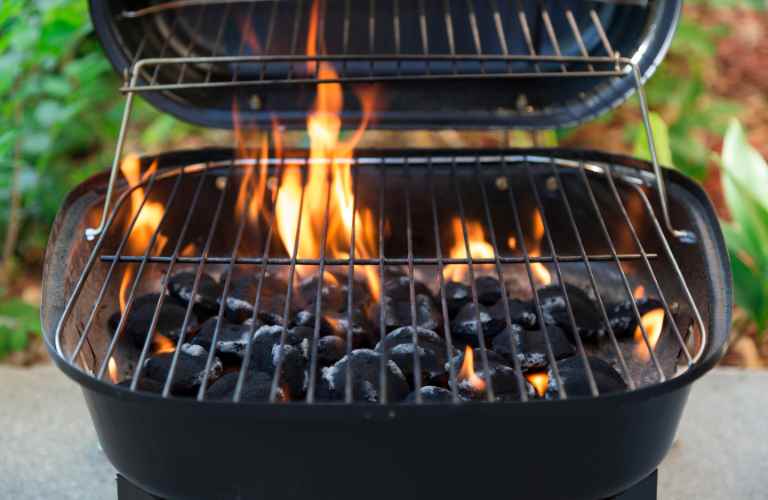
They require charcoal briquettes or natural lump charcoal as fuel, providing a distinct flavor to the steak.
However, they can take longer to heat up and require more hands-on management compared to other types of grills.
Gas Grill:
Gas grills are convenient and easy to use. They heat up quickly and allow for precise temperature control, making them ideal for beginners.
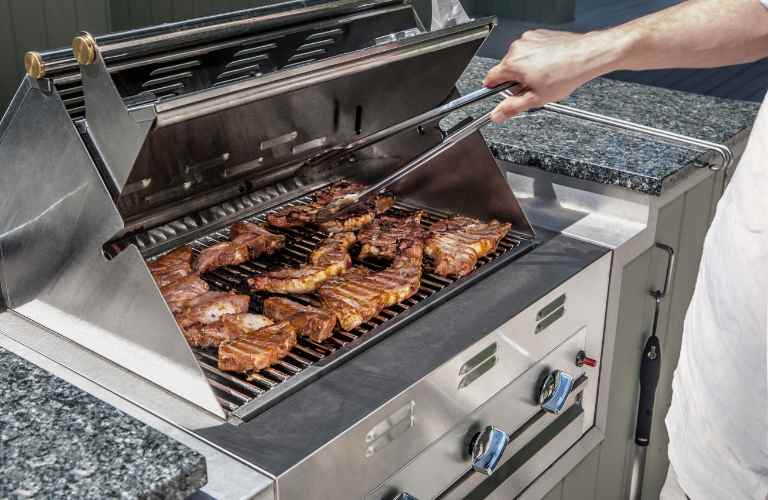
Additionally, gas grills eliminate the need for charcoal or wood, resulting in less mess and quicker cleanup. However, they may not provide the same smoky flavor as charcoal grills.
Electric Grill:
Electric grills are perfect for those who don’t have access to outdoor space or prefer an indoor cooking option.
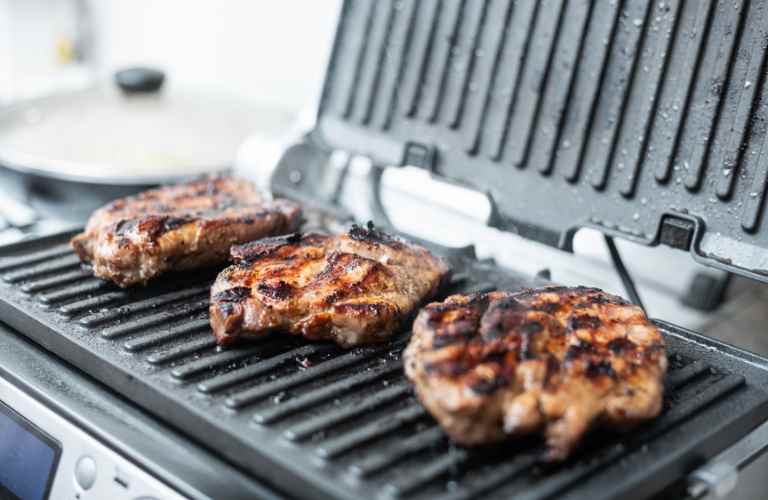
They are compact, easy to use, and heat up quickly. While electric grills don’t produce the same level of smoky flavor as charcoal or gas grills, they offer convenience and consistent results.
When purchasing a grill, consider factors such as size, cooking area, heat distribution, and additional features like side burners or temperature gauges. Choose one that suits your needs and budget.
B. Skillet
A skillet, also known as a frying pan, is another versatile tool for cooking steak. There are different types of skillets available, but the two most common are cast iron and stainless steel:
Cast Iron Skillet:
Cast iron skillets are revered for their exceptional heat retention and even heat distribution. They are perfect for achieving a beautifully seared crust on steaks.
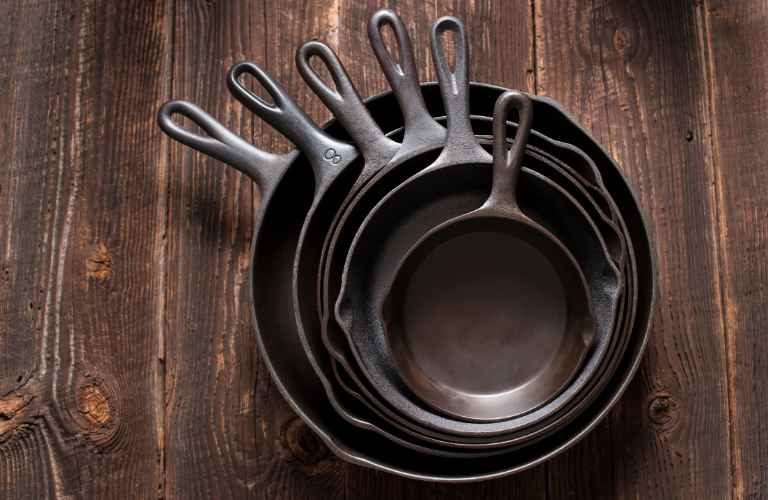
Before using a cast iron skillet, it needs to be seasoned properly to create a non-stick surface.
Seasoning involves applying a layer of oil and baking the skillet. Regular seasoning and maintenance are essential to prevent rust and maintain its non-stick properties.
Stainless Steel Skillet:
Stainless steel skillets are known for their durability and resistance to rust. They heat up quickly and evenly, allowing for consistent cooking results.
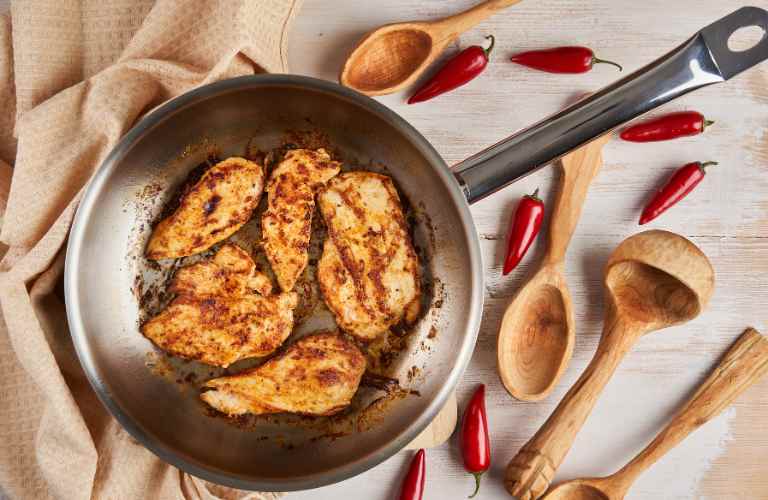
While stainless steel skillets don’t retain heat as well as cast iron, they are easier to clean and maintain.
Consider the size, weight, and handle design when choosing a skillet. A 10-12 inch skillet is a versatile option for cooking steak.
C. Oven
If you don’t have access to a grill or prefer an alternative cooking method, the oven can be an excellent choice for cooking steak.
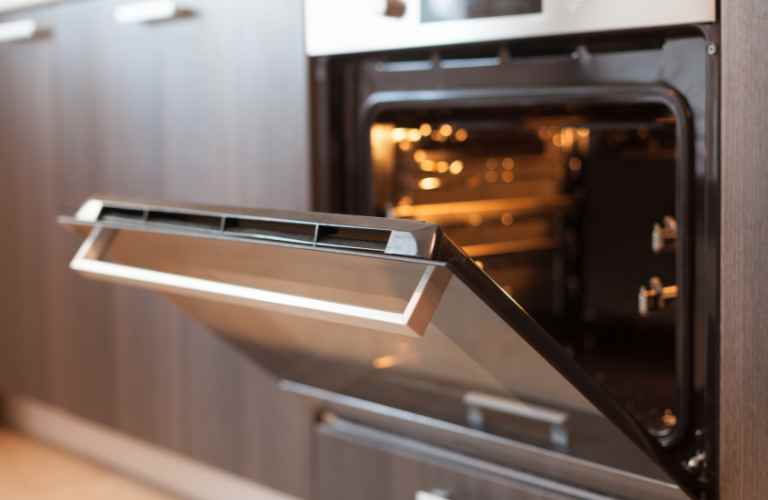
While it won’t provide the same sear and smoky flavor as grilling, the oven allows for precise temperature control and even cooking. Here’s how you can cook steak in the oven:
Broiling Steak in the Oven:
Preheat the broiler and place the steak on a broiler pan or a wire rack set over a baking sheet. Position the steak a few inches away from the broiler element.
Cook the steak on one side, then flip it and cook the other side to achieve your desired level of doneness. This method is ideal for thinner cuts of steak.
Benefits of Using an Oven for Steak Cooking:
Using the oven for cooking steak offers consistent heat distribution, making it easier to achieve your preferred level of doneness.
It is especially useful for thicker cuts of steak that require more time to cook evenly. Additionally, the oven allows you to cook steak year-round, regardless of weather conditions.
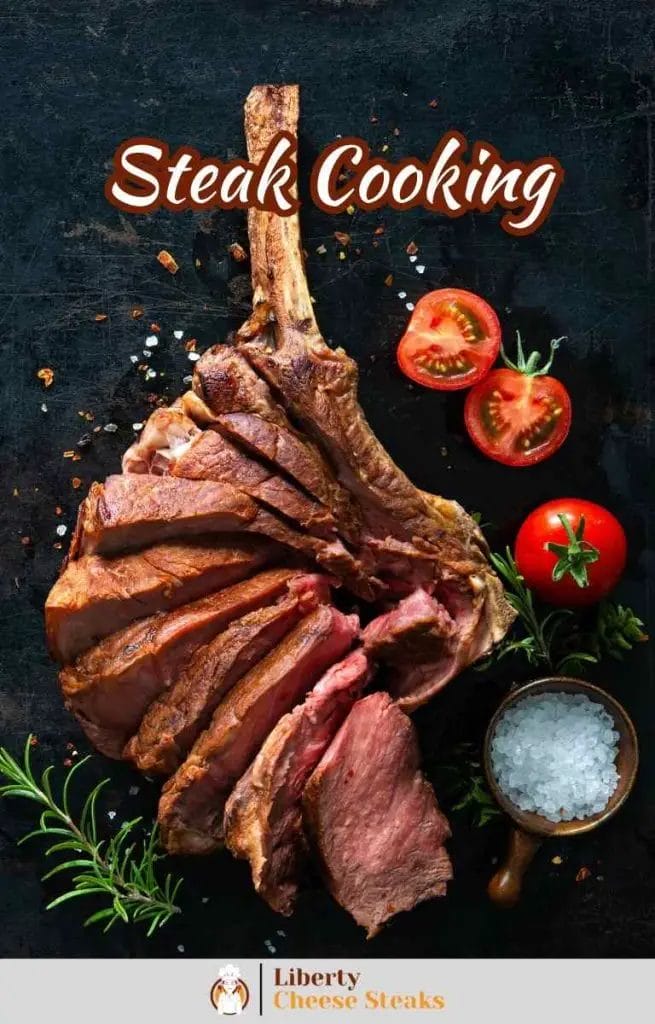
Tips for Achieving Desired Doneness:
Use a meat thermometer to monitor the internal temperature of the steak.
The USDA recommends the following internal temperatures for steak doneness: medium-rare (145°F), medium (160°F), and well-done (170°F). Remember to let the steak rest for a few minutes before slicing to allow the juices to redistribute.
D. Sous Vide
Sous vide is a cooking method that involves vacuum-sealing the steak in a plastic bag and cooking it in a temperature-controlled water bath.
While it may not be a traditional method, sous vide offers precise control over the cooking temperature and results in consistently tender and juicy steaks. Here’s what you need for sous vide cooking:
Introduction to Sous Vide Cooking Method:
Sous vide is a French term that means “under vacuum.” The process involves sealing the steak in a plastic bag and cooking it at a precise temperature in a water bath for an extended period. This ensures even cooking throughout the steak.
Benefits of Sous Vide for Cooking Steak:
Sous vide cooking allows for precise temperature control, preventing overcooking or undercooking the steak.
It also preserves the natural flavors and juices, resulting in exceptionally tender and flavorful steaks.
Necessary Equipment for Sous Vide Cooking:
To cook steak sous vide, you’ll need a sous vide immersion circulator or a water bath, vacuum sealer or zip-lock bags, and a container to hold the water bath.
Sous vide immersion circulators are compact devices that heat and circulate water to maintain a consistent temperature.
II. Additional Steak Cooking Tools
In addition to the essential equipment mentioned earlier, there are several additional tools that can enhance your steak cooking experience. Let’s explore them:
A. Thermometer
A meat thermometer is an indispensable tool for cooking steak to perfection.
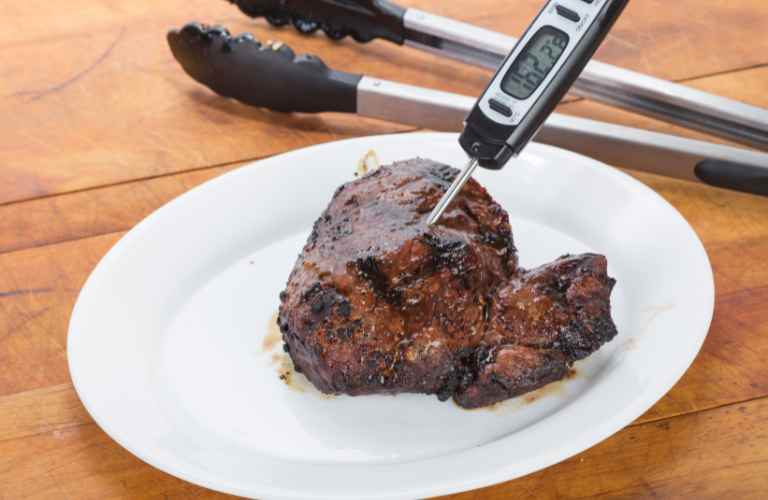
It allows you to monitor the internal temperature of the steak accurately, ensuring that it reaches the desired level of doneness. Here are the different types of meat thermometers:
Instant-Read Thermometer:
This type of thermometer provides a quick temperature reading when inserted into the thickest part of the steak. It is ideal for checking the doneness of the steak towards the end of the cooking process.
Leave-In Thermometer:
Leave-in thermometers, also known as probe thermometers, remain inserted into the steak while it cooks. These thermometers have a probe connected to a digital display that sits outside the oven or grill.
They allow you to monitor the temperature without opening the oven or grill lid, ensuring accurate and consistent results.
Wireless Thermometer:
Wireless thermometers consist of a probe that remains inserted into the steak and a separate unit that displays the temperature remotely. This allows you to monitor the cooking progress from a distance, providing convenience and flexibility.
Choose a meat thermometer that suits your cooking style and preferences. Follow the manufacturer’s instructions for accurate readings and ensure proper cleaning and storage of the thermometer.
B. Tongs
Tongs are essential for safely handling and flipping steaks during the cooking process.
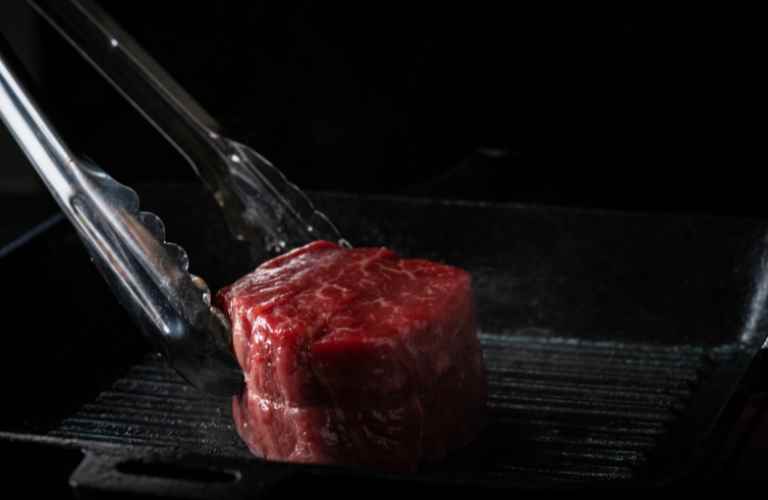
They provide a firm grip on the steak without piercing or damaging it. There are different types of tongs to consider:
Standard Tongs:
Standard tongs are versatile and suitable for general cooking purposes. Look for tongs with a sturdy construction and heat-resistant handles for safe and comfortable use.
Scissor Tongs:
Scissor tongs have a scissor-like mechanism that allows for a more precise grip on the steak. This type of tongs is particularly useful for delicate or small cuts of steak.
Long-Handled Tongs:
Long-handled tongs provide additional reach, making them ideal for grilling or cooking steak on a larger surface. They help to keep your hands at a safe distance from the heat source.
When using tongs, be gentle and avoid squeezing the steak excessively, as it can cause the juices to escape. Practice using tongs to flip and maneuver the steak comfortably.
C. Meat Tenderizer
A meat tenderizer is a tool used to break down the muscle fibers in tougher cuts of steak, resulting in a more tender and flavorful end product. Here’s what you need to know about meat tenderizers:
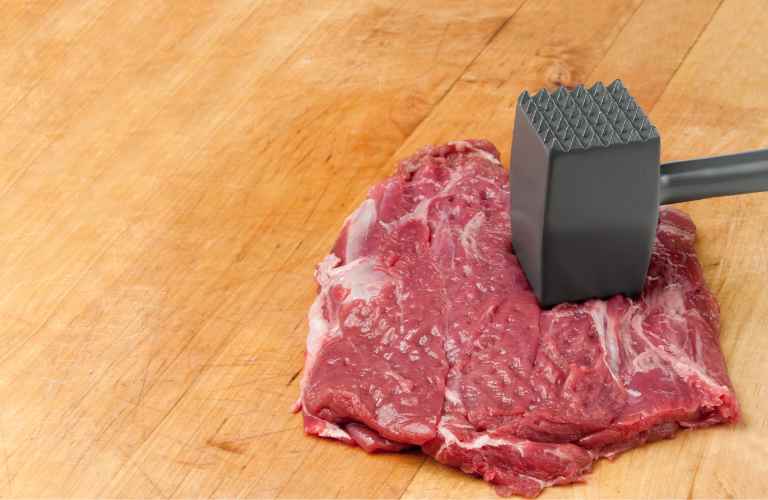
Why and When to Use a Meat Tenderizer:
Meat tenderizers are beneficial for cuts of steak that have more connective tissue or are thicker and require some assistance to achieve tenderness.
Tenderizing can also enhance the absorption of marinades and seasonings.
Different Types of Meat Tenderizers:
There are two common types of meat tenderizers: mallet-style and blade-style tenderizers. Mallet-style tenderizers have a flat or textured surface that you use to pound the steak gently.
Blade-style tenderizers have multiple small blades that penetrate the steak, breaking down the tough fibers.
Tips for Tenderizing Steak Effectively:
When tenderizing steak, start with clean and sanitized equipment. Use the tenderizer in a gentle and controlled manner, avoiding excessive force that may tear the meat.
For blade-style tenderizers, follow the instructions carefully to ensure safe usage.
It’s worth noting that not all cuts of steak require tenderizing.
Tender cuts like filet mignon or ribeye are naturally tender and may not need tenderizing techniques.
III. Tips and Techniques for Steak Cooking
Now that we’ve covered the essential equipment and additional tools, let’s delve into some tips and techniques to help you achieve the perfect steak.
A. Preparing the Steak
Choosing the Right Cut of Steak:
Different cuts of steak have varying levels of tenderness and flavor profiles.
Consider your preferences and the cooking method you plan to use when selecting a cut. Popular cuts for grilling include ribeye, New York strip, and T-bone steaks.
Seasoning and Marinating Techniques:
Seasoning enhances the flavor of the steak. You can use a simple seasoning of salt and pepper or experiment with different spice rubs and marinades.
If using a marinade, ensure that the steak is adequately coated and allow it to marinate in the refrigerator for the recommended time.
Resting the Steak Before Cooking:
Letting the steak rest at room temperature for about 30 minutes before cooking allows for more even cooking and better searing.
It also helps the steak retain its juices.
B. Cooking Methods and Temperatures
Grilling Techniques and Temperature Guidelines:
Preheat the grill to the appropriate temperature based on your desired level of doneness. For example, medium-rare steaks typically require a grill temperature of around 400°F (204°C).
Use direct heat for thinner cuts and indirect heat for thicker cuts. Flip the steak once or twice during the cooking process, using tongs.
Skillet Cooking Tips and Temperature Recommendations:
Preheat the skillet over medium-high heat and add oil or butter. Place the steak in the skillet and cook for a few minutes on each side until it reaches your desired level of doneness.
Adjust the heat as needed to prevent burning. Use a meat thermometer to monitor the internal temperature.
Sous Vide Cooking Times and Temperatures:
Sous vide cooking involves precise temperature control. Refer to a sous vide cooking guide or recipe for specific temperature and time recommendations based on the thickness and desired doneness of your steak.
After sous vide cooking, sear the steak briefly on high heat to develop a crust.
IV. Maintenance and Care of Steak Cooking Equipment
Proper maintenance and care of your steak cooking equipment ensure its longevity and optimal performance. Here are some guidelines to follow:
A. Cleaning Grills, Skillets, and Ovens:
Clean the grill grates, skillets, and oven after each use. For grills, scrape off any residue with a grill brush and clean the grates with soapy water or a grill cleaner.
Skillets should be cleaned with hot water, mild dish soap, and a brush or sponge. Ovens can be cleaned with oven cleaners or a mixture of baking soda and water.
B. Seasoning and Maintaining Cast Iron Skillets:
Seasoning is crucial for maintaining the non-stick properties of cast iron skillets. After cleaning, dry the skillet thoroughly and apply a thin layer of oil to the surface.
Place the skillet in the oven and heat it at a low temperature for about an hour. Repeat this process periodically to maintain the seasoning.
C. Proper Storage of Equipment:
Store your steak cooking equipment in a clean and dry area. Grills should be covered to protect them from the elements.
Skillets should be stacked or hung to save space and prevent damage. Ovens should be cleaned and closed properly when not in use.
Conclusion
Equipping yourself with the right tools and knowledge is essential for cooking steak to perfection.
Whether you choose to grill, use a skillet, oven, or sous vide, each method offers its unique benefits and techniques.
By selecting the appropriate equipment, employing the right cooking methods, and practicing proper maintenance, you can elevate your steak cooking skills and impress your family and friends with delicious and succulent steaks. Enjoy the journey of mastering the art of steak cooking!
Frequently Asked Questions
Can I use a regular meat thermometer for checking the doneness of my steak?
A regular meat thermometer can be used, but it’s recommended to use an instant-read thermometer or a leave-in thermometer designed specifically for grilling and cooking steak. These thermometers provide more accurate and quick readings, ensuring that your steak is cooked to the desired level of doneness.
How long should I let my steak rest after cooking?
It is recommended to let your steak rest for about 5-10 minutes after cooking. This allows the juices to redistribute throughout the meat, resulting in a juicier and more flavorful steak.
Can I use a gas grill for smoking my steak to achieve a smoky flavor?
While gas grills are not typically known for producing a strong smoky flavor, you can still impart some smokiness by using wood chips or adding a smoke box to your gas grill.
Soaking wood chips in water for about 30 minutes, then placing them in a foil packet or a smoke box, can create some smoky aroma when heated on the grill.
What should I do if my steak is too thick to cook evenly?
If your steak is too thick, you can try a two-step cooking method. Start by searing the steak on high heat to develop a crust, then transfer it to a lower heat or finish it in the oven to ensure it cooks evenly.
This method allows the steak to sear properly while giving the thicker parts more time to cook through.
Do I need to oil my skillet before cooking steak?
It is recommended to add a small amount of oil or butter to the skillet before cooking steak. This helps to prevent the steak from sticking to the skillet and aids in creating a flavorful crust.
However, if you’re using a well-seasoned cast iron skillet, it may already have enough natural oils to prevent sticking.
Can I use a sous vide technique for thinner cuts of steak?
While sous vide cooking is commonly used for thicker cuts of steak, it can also be used for thinner cuts.
However, the cooking time will be significantly shorter compared to thicker cuts. Adjust the sous vide cooking time accordingly, and remember to sear the steak quickly after sous vide to develop a crust.
Is it necessary to tenderize all cuts of steak before cooking?
No, not all cuts of steak require tenderizing. Tender cuts like filet mignon, ribeye, and strip steak are naturally tender and don’t require tenderizing techniques.
However, tougher cuts like flank steak or skirt steak may benefit from tenderizing methods to break down the tough fibers.
Can I reuse the marinade that I used on the raw steak?
It is not recommended to reuse marinade that has come into contact with raw meat. The marinade may contain bacteria from the raw meat, which can cause foodborne illnesses if consumed.
If you want to use the marinade for basting or as a sauce, it’s best to heat it to a boil first to kill any potential bacteria.
Alternatively, you can set aside a portion of the marinade before adding it to the raw steak to use as a sauce later.
Can I cook a frozen steak directly on the grill or in a skillet?
It is generally recommended to thaw the steak before cooking for more even and consistent results. However, if you’re cooking a frozen steak, you can still do so by adjusting the cooking time.
Keep in mind that it may take longer to cook a frozen steak, and the exterior may become overcooked before the interior reaches the desired doneness. It’s best to thaw the steak beforehand for optimal results.
What is the best way to clean a cast iron skillet after cooking steak?
To clean a cast iron skillet, avoid using soap or harsh detergents as they can strip away the seasoning.
Instead, use hot water and a stiff brush or sponge to scrub off any food particles. If needed, you can use a small amount of kosher salt as an abrasive.
Rinse the skillet thoroughly, then dry it completely to prevent rust. Lastly, apply a thin layer of oil to the skillet to maintain its seasoning.

